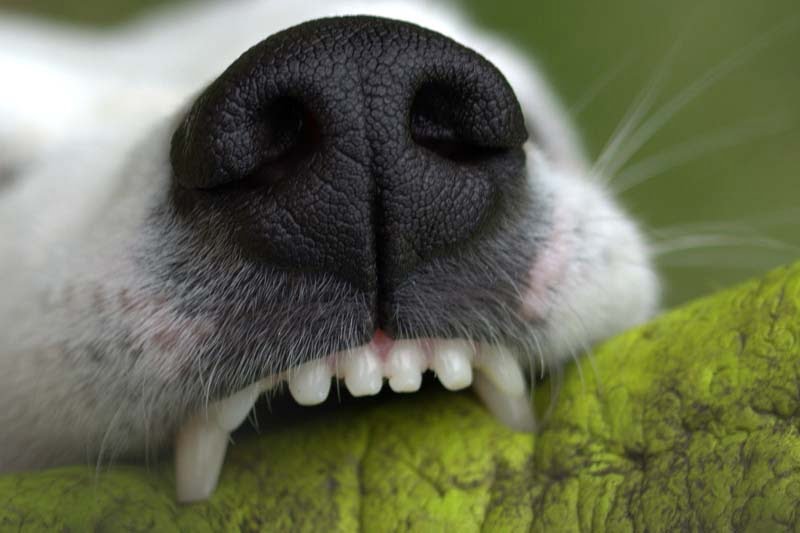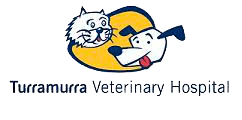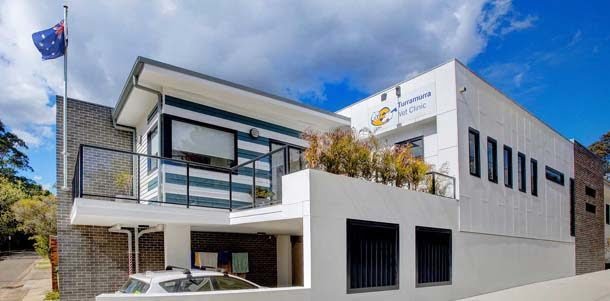One of the most common problems in cats and dogs
Pet Dental Procedure
Pet dental disease is one of the most common problems seen by veterinarians, with recent studies showing at least 70% of cats and dogs have some degree of dental disease by the age of 3. This can often go unnoticed, as it is very rare for dental disease to cause a pet to stop eating, or to show that they may have oral discomfort or pain.
Home dental care forms an important part of slowing the progression of pet dental disease, but often this isn’t enough on its own. Your vet may recommend a dental scale and polish to ensure a complete clean of your pet’s teeth, including those hard-to-reach areas in the mouth. When instigated early in the course of disease, this can prevent dental disease from progressing, leading to a healthy pain-free mouth for your pet!
How do I know if my pet has dental disease?
Some or all of the following signs may be observed:
- Smelly breath
- Discoloured teeth
- Tartar – a yellowy-brown build-up of material firmly attached to the teeth
- Gingivitis – red, inflamed gums with or without bleeding
- Broken teeth
- Reduced ability to chew food or chewing on one side of the mouth only (severe cases)
- Excessive drooling (severe cases)

Many pets are genetically predisposed to periodontal disease (gum disease), which is often painful. Periodontal disease occurs when there is a bacterial infection in the gums that develops with plaque accumulation over time. If plaque is not removed, it will calcify and turn into tartar. This leads to the loss of bone that hold the teeth in the jaw, which causes pain and eventual tooth loss.
Treating dental disease as early as possible gives us the best chance of saving the teeth involved and minimising discomfort. If there is a delay in treatment or if nothing is done, dental disease will progress and sometimes require us to extract multiple diseased teeth.
Why is it important to treat dental disease in pets?
Hygiene in the home
If you live with a dog or a cat with dental disease, then you are being exposed either directly or via aerosol to the bacteria in their mouth during daily interactions with your pet – not to mention the bad breath!
The condition of your pet’s teeth affects their overall health
Tartar contains billions of bacteria which can relocate to other areas of the body and cause infections elsewhere, such as in the kidneys or heart valves. Breathing in the bacteria can cause upper airway or chest infections.
Animal welfare
Gum disease causes dental pain, and if you have ever suffered from that, you’ll know that it’s not pleasant. It is a veterinarian’s role to properly advocate for your pet’s needs and advise their owners about veterinary care, including maintaining a healthy pain-free mouth, but it is the pet owners themselves who are ultimately responsible for their welfare.
How bad are my pet’s teeth?
During your pet’s physical examination, your vet will examine the teeth and allocate a dental grade from 0-4 according to the degree of dental disease present, with 0 representing a healthy set of teeth and 4 being severe dental disease requiring urgent veterinary dental care.
The development of dental disease varies widely between pets, with some requiring regular dental procedures at the vet despite the best home care. Your vet will assess your pet’s teeth at each annual health check and recommend more frequent dental examinations if required.
Recommendations are outlined below for each dental grade and what your vet may recommend depending on the state of your pet’s teeth.
| Grade | Signs | Treatment recommendation |
| 0 | Healthy teeth | Continue home care |
| 1 | Inflamed gums (gingivitis) and plaque |
Gingivitis may be reversible with tooth brushing and diet changes. A scale & polish may be required. |
| 2 | Mild to moderate tartar and gingivitis | Dental scale and polish will usually reverse disease. |
| 3 | Heavy tartar, periodontal disease and bone loss (painful) |
Dental scale and polish. Dental x-rays for tooth root evaluation with possible tooth extractions. |
| 4 | Severe tartar, periodontal disease and tooth loss (very painful) |
Dental scale and polish. Dental x-rays with likely tooth extractions. |
The following images give visually demonstrate each Dental Grade.
| Grade | Image |
| 0 |  |
| 1 |  |
| 2 |  |
| 3 |  |
| 4 |  |
What is involved in a pet dental procedure?
There are 4 main steps in a dental scale and polish procedure:
- Scaling removes the plaque and tartar both above and below the gums, which is often sensitive and difficult to reach with simple brushing at home. This is done with sophisticated ultrasonic cleaning equipment.
- Periodontal probing uses a dental probe to look for pockets and abnormalities surrounding each tooth.
- Polishing smooths the surface of the teeth using a pet-safe toothpaste, making them more resistant to subsequent plaque accumulation.
- Flushing removes dislodged tartar from the teeth and helps to remove the bacteria from the oral cavity.
Once your pet has recovered from the anaesthetic, they will be discharged back to your care in the afternoon.
What if my pet needs a tooth extraction?
Extractions are reserved for severely diseased teeth that are not salvageable. Generally if dental disease is treated early, extractions are usually not necessary.
If there is a tooth abnormality detected, dental x-rays are taken to allow examination of the tooth roots, checking for fractures and abscesses below the gumline as well as to assess for bone loss. If severe bone loss is present, generally the affected teeth will need to be extracted. Another common reason for tooth extraction is a fractured tooth, where the pulp cavity (living part of the tooth) is exposed.
Extractions are performed after a phone discussion with the pet’s owner, as we require consent and will need to revise the estimate, which is based on the number of teeth requiring extraction.
Local anaesthetic is used to block nerve pain to the teeth being extracted and then additional pain relief is given after the procedure and/or to go home with.
Absorbable sutures are usually placed so that the gums heal quickly.
If your pet has had a tooth or teeth extracted, a complimentary post-dental exam is recommended 7 days later.
What should my pet eat after their dental procedure?
If your cat or dog has had a dental scale and polish and no extractions were performed, then their normal diet can be resumed immediately.
For pets that have had tooth extractions, they should remain on soft food only until the gums have healed, which is approximately 7 days. Avoid foods that are too ‘mushy’ as food particles may get trapped in the sutures. Instead, pieces of cooked chicken with pasta or rice or the chunkier wet food varieties is preferred.
To slow the build-up of tartar in the future, offer your pet dental chews, such as Oravet chews, 2-3 times per week and feed a larger sized biscuit daily, such as the Hill’s T/D dental diet (‘Teeth Diet’), as part of their regular diet.
What about pain relief?
Pain relief is administered routinely before any dental procedure is started. If dental extractions are required, then local anaesthetic is used in addition to general anaesthetic, so that your pet does not feel pain when they wake up, along with an anti-inflammatory injection. Your pet may also be sent home with a course of pain relief medication.
Why can’t my pet’s teeth be cleaned while they are awake?
Anaesthesia-free dentistry in pets is an animal welfare concern for many reasons.
- A thorough dental clean can take anywhere between 20-60 minutes simply to scale and polish every surface of each tooth, and involves cleaning underneath the gum line which is a very sensitive area.
- The animal must be physically restrained, which can lead to significant anxiety.
- As the animal is conscious, it will be fully aware of any pain involved in the procedure, which is very stressful for the pet.
- The pain caused can also lead to longer term anxiety and aversion to being touched around the face and muzzle.
- ‘Anaesthesia-free dentistry’ is frequently only cosmetic, as removal of the visible tartar on the tooth surface does not address the underlying gum disease, as only removal of the disease-causing bacteria and debris from the pockets around the teeth will halt the progression of dental disease.
- Dental x-rays are not possible in conscious animals.
- A general anaesthetic also allows us to provide protection of the airway from inhalation of harmful oral bacteria.
In addition to this, the use of a dental probe and scaler in pets without anaesthesia is a safety issue for our veterinary staff and condemned by the Australian Veterinary Association and other animal welfare groups.
A dental scale and polish procedure at Turramurra Veterinary Hospital, allows a stress-free, safe and detailed oral assessment. Your pet will have a thorough pre-anaesthetic examination, and will be monitored closely while under the anaesthetic and into recovery.
How do I prepare my pet for a dental scale and polish procedure?
Fasting
Dogs and cats need to be fasted from 9pm the night before, but you can leave them with their water overnight, just remove their water bowl first thing in the morning.
Toileting
Dogs will need a toilet walk at home prior to their admission time and again just before coming into hospital to empty their bladders. Cats will toilet as usual in their litter box while they are awaiting their procedure.
Consent
Prior to your pet’s dental procedure, you will be sent an SMS with a link to a consent form, which is a legal requirement before an animal is admitted for a general anaesthetic. If you have trouble accessing the link, then a manual consent form can be filled out at admission.
What is the admission process for my pet?
Admission time
Admission for pet dental procedures is between 7.30am – 8.30am. An earlier admission time can be organised by prior arrangement if required.
A Customer Care team member will greet you and your pet on arrival and ensure the consent form has been completed, then bring your pet into our hospital area where he or she will be greeted by the surgery team.
Phone call
The veterinarian performing your pet’s dental procedure will call you prior to anaesthetising your pet, which allows any further questions you may have to be answered prior to going ahead. You can expect the vet to phone you between approximately 8am and 11am. A discharge time for your pet may be booked at this time and the estimate discussed if this has not already been done.
Will my pet have a blood test before anaesthesia?
Dogs and cats routinely have a blood test called a PCV/TPP at the time their intravenous catheter is placed, which identifies patients with a low red blood cell count or protein level prior to anaesthesia. This only requires a few drops of blood to run. In addition to this, one of the consent form questions is to ask you whether you would like your pet to have a pre-anaesthetic blood test, which in addition to the red blood cells, also checks the white blood cells, platelets, glucose level, kidneys and liver prior to an anaesthetic. This test is an optional test for owners who wish to know a bit more about their pet’s health prior to undergoing anaesthesia. Click here for the benefits of a pre-anaesthetic blood test.
How is an anaesthetic monitored at Turramurra Veterinary Hospital?
Anaesthetic complications are rare at our practice due to our high standard of care for anaesthetic monitoring as follows:
Induction and intubation
The anaesthetic induction agent is given through an intravenous catheter and then a tube is placed into the pet’s trachea (endotracheal tube). This ensures that the airway remains open at all times. A mixture of oxygen and anaesthetic gas is then breathed in through an anaesthetic machine during the operation. A qualified veterinary nurse can give extra breaths as required manually through a rebreathing bag to keep the oxygen at an ideal level.
Intravenous fluids
Your pet’s blood pressure and hydration status are maintained by routine use of intravenous fluids during surgery, which in turns reduces recovery times because by administering fluids throughout the anaesthetic, the kidneys and liver are properly perfused, allowing fast metabolism of the anaesthetic agents.
Blood pressure
Blood pressure is measured throughout surgery and fluid rates and anaesthetic levels adjusted accordingly.
Pulse oximetry
Pulse oximetry allows the oxygen levels in the blood to be monitored in real time with every heartbeat.
Temperature
Temperature is monitored closely during and after desexing and patients are kept warm with a circulating warm air blanket called a Bair Hugger as well as heated surgery tables.
When can my pet go home?
Discharge time is usually between 3-5pm depending on the pet’s recovery progress and the owner’s availability in the afternoon. We are open until late evening and are happy to cater to the discharge time that best suits you and your pet. Where possible, the vet that performs the dental procedure is the same vet that discharges the patient. This allows for continuity of care and for any questions to be answered at the time of discharge. For late patient discharge requests, your vet may do a phone discharge in the afternoon to go through instructions with you and then book you in with a nurse or a different vet in the evening.
Additional Resources
Dental Care and What to Expect if your Pet Needs it, Veterinary Partner


